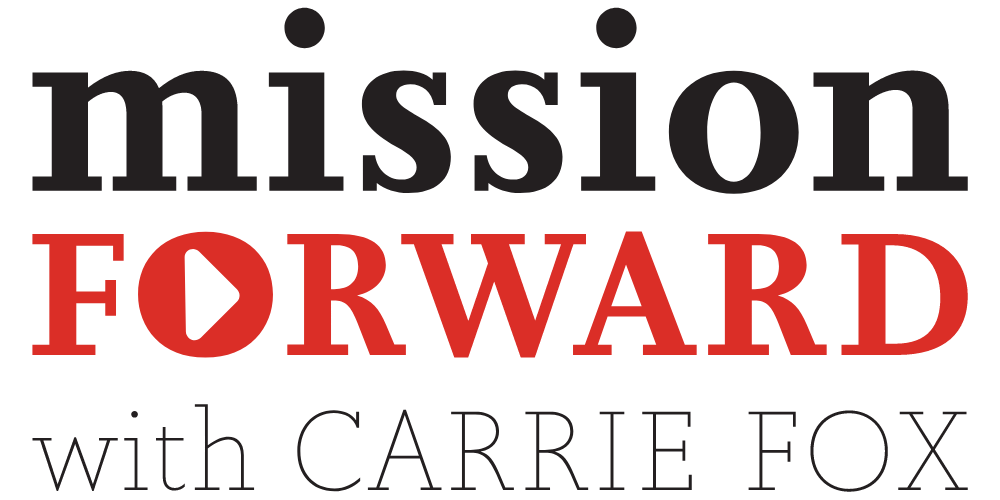Healthy Communication.
This article is part of Finding the Words, a newsletter that delivers practical insights on the day’s issues.
Have you found yourself needing to communicate critical information—to your team, your community, your audience— and at a loss for how to communicate it?
Maybe you don’t have all the facts.
Maybe the situation is still unfolding.
Maybe the weight of the message feels too heavy to deliver.
If you find yourself struggling to communicate, you’re not alone. In our own national research, we found that 51% of purpose-driven leaders cite “leading through challenging moments” as one of their top communications challenges.
And one of the most common questions I get?
"How can I communicate better through tough moments?"
It's a good time to take on that question, as we’re in the middle of National Public Health Week, a week-long celebration of health and all the factors that contribute to it. In service of this year’s theme, We Are All Public Health, I’ve compiled tips on how to improve the health of your communications practices while building and earning trust in the process.
The insights in today’s post are inspired by a conversation I conducted with my good friend Mark Miller, Vice President of Communications at the de Beaumont Foundation and lead editor of the book Talking Health. While Mark and I conducted this conversation on the Mission Forward podcast in 2022, the insights are timeless and universal. Take your time with this check-in, and check back next week for part 2 of this healthy communication post:
1. Do you Regularly Challenge Assumptions? In everyday communication, we naturally and often unknowingly make assumptions about one another: about what we think people want or need to hear from us. Decisions you make in your own communication can either help or harm your audience; they can either close or widen divides.
Try it: Before you deliver an important message, ask yourself if there might be assumptions in the message: about the audience and what you believe they want or need. Then see if you can proactively challenge or break those assumptions to ensure the message can be received by your audience.
2. Do You Share Stories, About One Person, One Place, or One Idea? Stories are essential to communicating complex information. Stories provide context and can make facts matter more to your audience. And as I’ve shared in previous posts, there is a responsibility that comes with storytelling. The stories we tell shape narratives and can either break stereotypes or reinforce them.
Try it: The next time you have an important message to communicate, think about the story that can help deliver your point, and consider specificity by focusing on one person, one place, or one idea.
3. Does Your Audience Know You? Do They Trust You? Organizations often “look to the communicators” to solve trust problems. Sometimes, those solutions are packaged into national campaigns, a new brand, or a set of company-aligned messages. As I’ve shared before, if you’re looking to communicate through a complicated time, then what you need to build trust is plain and simple. People need to understand what you're saying; they need to believe that you're reliable and that you have their best interests at heart.
Try it: Rather than delivering a cold corporate line, consider what you want and need to say to the people you care about most. If you’re looking to build or rebuild trust, you have to ask: who doesn't trust you? And why don't they trust you? Ask questions, and inform your messages accordingly.
4. Is There a Shared Understanding of the Issue? If you need to communicate about a complex topic, particularly if there is a known dividing line on the issue, consider a shared value statement. For instance, here’s what Mark Miller uses when describing public health: “Just like a person makes decisions that affect their health, so does a community. We need clean air and safe neighborhoods, for example. Public health experts listen to the community and look for patterns in what is affecting their health. They use science to diagnose problems, and they bring together everyone who can stop health threats before they start.”
Try it: If you need to communicate about a complicated topic, try leading with a shared value statement— something that people can relate to on a personal level and can help them better understand the issue on a more universal level.
5. Do You Steer Clear of Jargon? In my book, I talk about the importance of making complex information real, relatable, and repeatable: turning commonly used jargon into commonly understood and accessible information and stories. Ensuring your communications are accessible to a wide range of audiences is essential when communicating complex information.
Try it: To cut down on jargon and technical speak in your message, ask yourself this: “Do I want people to understand me, or do I want them to use my words?” You usually can't have both. So, whether you’re a doctor, a CEO, a foundation leader, or a fundraiser, remember it’s not just what you say but what people hear, and what they will be able to remember.
Bottom line: Communicating through challenging moments can be easier when we focus on the heart of the message and the people on the receiving end. Try these five actions this week, and check back next week for part 2 of this communications health check.
This post is part of the Finding The Words column, a series published every Wednesday that delivers a dose of communication insights direct to your inbox. If you like what you read, we hope you’ll subscribe to ensure you receive this each week.






